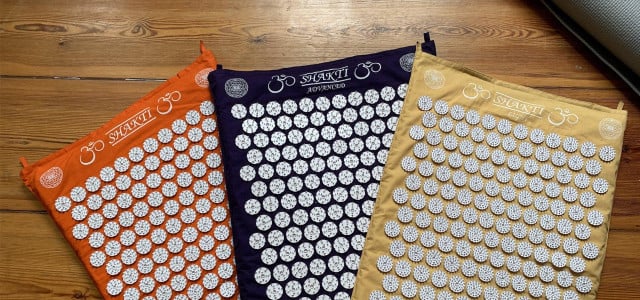
Acupressure mats are trendy: they are supposed to relieve pain and help you relax. The best tips for more sustainable Shakti mats and their effects.
![]()
What is an acupressure mat?
Boards of nails were originally used by yogis to release blockages, and “fakirs” used them to show off their alleged freedom from pain in front of an audience. Their popular successors are acupressure mats, which have their origins in Sweden’s modern yoga scene.

An acupressure mat is a mat with small plastic tips (spikes) on which you lie with your back and shoulders – there is a separate neck pillow for the neck. The usual dimensions for an acupressure mat are either 68 x 42 cm or 74 x 44 cm.
The fewer needles, the more painful
The plastic needles are arranged on plates. There are around 20 to 30 tips per plate. The following applies: the fewer peaks the acupressure mat has, the more intense the pressure effect. If a mat has many spikes, the pressure is better distributed, making it less painful to lie on. Most mats have around 6000 points.
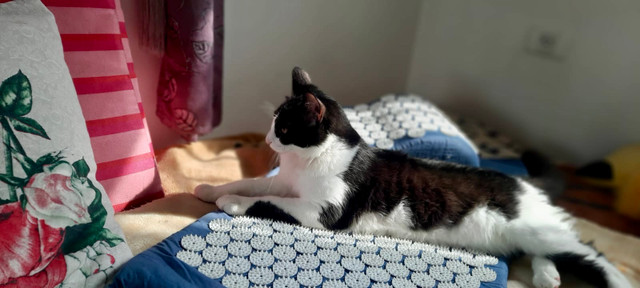
A standard Shakti mat has 6210 needles, but there are also models with 8280 needles for beginners. Experienced acupressure mat users sometimes sleep on only 4140 needles.
I have had an acupressure mat myself for about three years.
Acupressure mat: the right application
Using an acupressure mat is very simple: you set an alarm clock for ten to 15 minutes; lays his back on the mat and – relaxes. Children and anyone else who is particularly sensitive to pressure can leave a t-shirt on.
You can also use the Shakti mat for other body zones such as feet, legs, hands and arms. Essentially, it is always about placing the tense part of the body on the spikes.
Effect of an acupressure mat
Acupressure mats should have a variety of effects. This is how Shakti mats are supposed to be
- stimulate blood circulation
- better supply muscles with oxygen and nutrients,
- relax the fascia and
- release pain-relieving messenger substances by activating the pain receptors.
When manufacturers advertise their mats with these promises of effectiveness, they often refer to the positive reviews from users. However, its effectiveness has not been scientifically proven.
The Stiftung Warentest also dealt with acupressure mats back in 2001. In the acupressure mat test, however, the testers were not really convinced. While they concluded that the mats may lead to relaxation after the end of the session, they also concluded: “There is no specific therapeutic benefit to be derived from this ‘acupressure’.”
The study situation on the healing method acupressure in general and acupressure mats in particular is also extremely thin and not very meaningful.
After all, there is a relatively recent study by the Italian University of Padua from 2021 on acupressure mats: The researchers examined the effect of acupressure mats as an aid for non-specific pain in the lower back (chronic back pain).
44 patients performed various exercises – half with and the other half without a Shakti mat. The scientists found that the acupressure mat “increased” the pain relief. In addition, the mats are safe, compatible and inexpensive. They are easy to use at home and are therefore suitable for treating back pain at home in the long term.
It is true that this comparatively small study probably cannot serve as reliable proof of the high effectiveness of acupressure mats. However, at least from a scientific point of view, it gives some indications of possible positive effects.
When using it, it is best to always pay attention to your own body feeling. Also, an acupressure mat cannot replace professional medical treatment. If you suffer from health problems such as severe back pain, we strongly recommend that you visit a medical practice that you trust.
Are there sustainable acupressure mats?
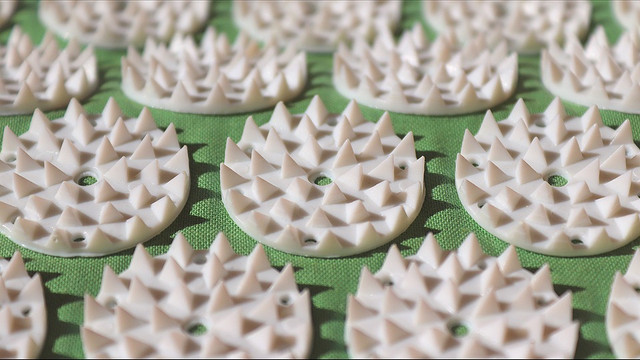
According to our research, there is no such thing as an acupressure mat made from 100% more sustainable materials. Because at least the spikes on the models we know are made of plastic, mostly based on petroleum. If you want the tips to be metal or wood too, a sadhu board might be of interest to you. According to the product description, such “real” nail boards should help advanced yogis to “strengthen their resilience and feel full of energy”.
Spikes are made of plastic
The plastic is usually acrylonitrile butadiene styrene (ABS). From the points of view of hygiene, safety and durability, this material is a justified choice due to its robustness and durability. But it is not sustainable. Some manufacturers advertise that ABS is 100 percent recyclable. In practice, however, this is rarely the case: since the small plates are permanently bonded to the fabric of the mat, it does not belong in the yellow bin, but will end up in the residual waste at the end of its life.
Acupressure mats with organic cotton are rare
As a fabric for the mat, many manufacturers use cotton or semi-linen. So far, Shakti and Mysa are the only brands we know of that claim to use organic cotton. The cotton from Shakti also bears the GOTS seal.
Eco mat: Coconut fiber and buckwheat hulls replace foam
It is positive that many manufacturers do without foam when filling the acupressure mat. Instead, coconut fibers have prevailed as a filling material. For the pillows in so-called eco models, a filling made of buckwheat husks is usually used.
Acupressure Mats: Fair Production or Cheap Import?
There are many small German companies that sell acupressure mats with their logo. Unfortunately, they don’t say a word about where they have them produced. This suggests that the various mats (including those made from natural fibers) all come from the same Chinese factories. You can buy acupressure mats in the hundreds or thousands for a few dollars each from wholesalers and brand them with your own logo.
The only fairly produced acupressure mats we know of at the moment come from Shaktimat.
Acupressure mat: our recommendations
Shaktimat: manufactured under fair working conditions
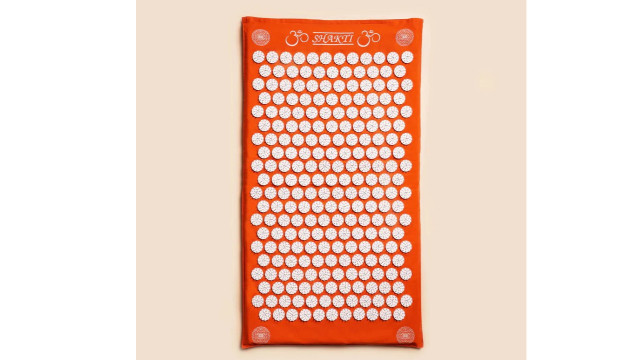
In our opinion, the Shaktimat is the best acupressure mat currently on the market. Both from an ecological and social point of view. It’s made at the Gratitude Factory in Varanasi, India, which employs 80 women who Shakti says are paid fairly and receive other benefits. There is an educational program for the daughters of workers, so that they can enjoy school education until they are 18 years old.
Shakti uses organic cotton that is GOTS-certified and a filling made from 100 percent recycled foam. The 6210 ABS plastic tips are approved for medical use, according to Shakti.
Buy: for about 66 euros at Shaktimat, Goodbuy or Amazon
Shakti-Matte Light: acupressure mat for beginners
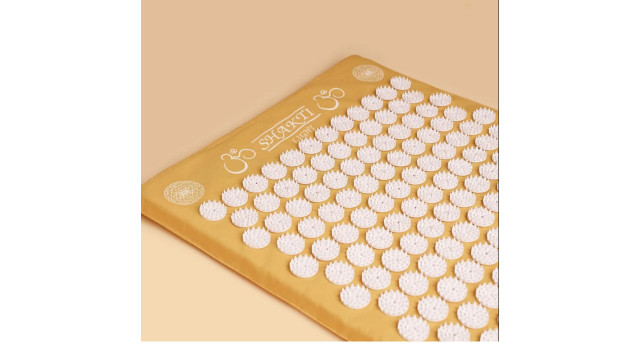
If you are looking for a gentle introduction to the world of acupressure mats, Shaktimat also has entry-level models with over 8000 tips. The higher number of tips allows the weight to be better distributed, which means you feel less pressure on the mat.
The beginner: indoor acupressure mat comes from fair production and is made of GOTS-certified organic cotton.
Buy: for 66 euros at Shaktimat, Goodbuy or Amazon
Mysa mat with natural materials
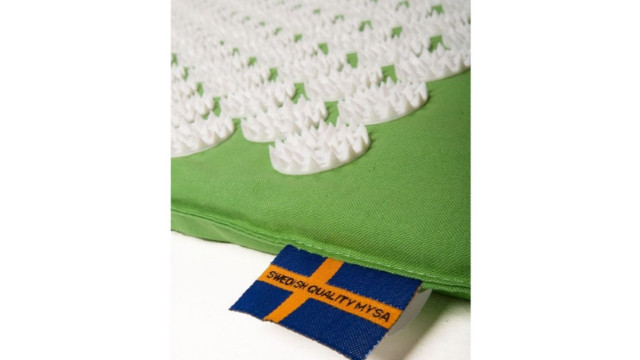
In addition to the ShaktiMat, the Mysa acupressure mat is one of the best known on the market. The Swedish manufacturer Mysa does not use foam, but only “untreated plant fiber filling”. According to Mysa, the cover should be made of organic cotton, but there is no official seal for it. Mysa also does not provide any information about the production site (only that it is “not in India”). The tips are made of ABS. Mysa only speaks oracularly about their number. But we counted (no joke!): There are 6930 pieces!
The Mysa mat was also the subject of the independent study from Italy mentioned above.
Buy: for about 65 euros at Amazon
By the way: You can find current discount codes for Shaktimat and many other shops on our voucher platform.
Read more on Techzle.com:
- Healthy yoga: What you should pay attention to when buying a yoga mat and clothing
- back pain, what to do That helps with the pain
- Everything okay? Here you will find better & more sustainable sports fashion